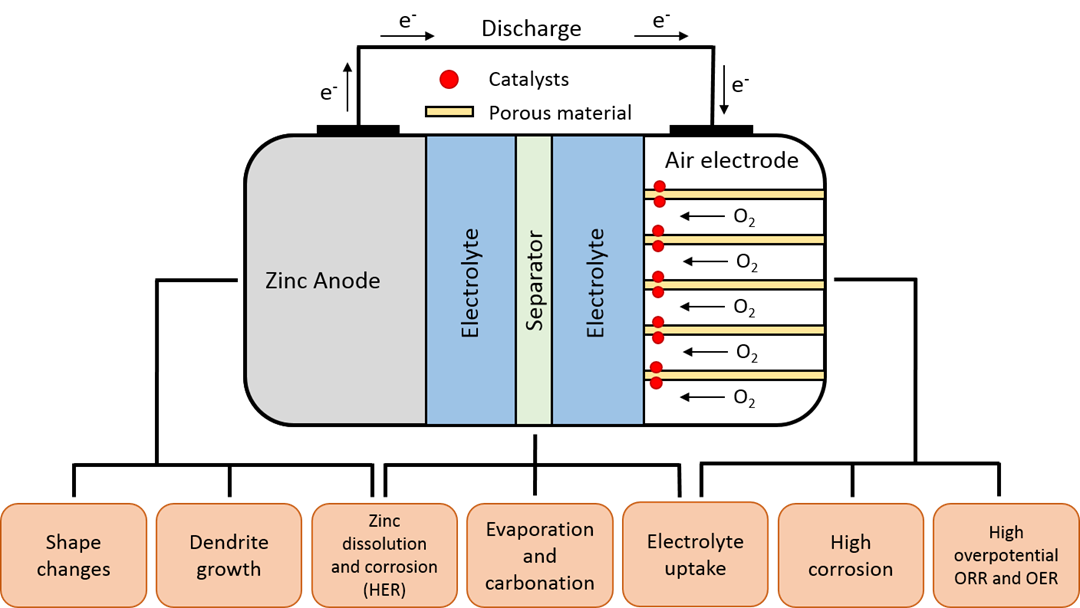Project Background
The main objectives for the ZAS project are to improve the performance and lifetime of zinc-air batteries as well as reducing their cost.

Project Background
It has been widely acknowledged that establishing Renewable Energy Sources (RES) is a priority measure, for both the reduction of energetic dependence and for environmental protection and sustainable development. However, exceeding a share of 20 % renewable energy production is difficult without a solution for energy storage. Energy storage is necessary in order to ensure continuity in the energy supply. The potential for stationary energy storage to transform the electric power industry is driving the development of many emerging storage technologies, including metal-air batteries, regenerative fuel cells, liquid-metal systems, and adiabatic compressed-air energy storage. These new systems should be safe and economically competitive in comparison to conventional energy systems. In addition, the optimal energy storage system will vary according to the different energy sources and geographical locations.
Early business case
Decentralized application of batteries in the low voltage end of distribution grids is expected to become an early business case following the dramatic increase in solar power installations seen all over Europe. Metal-air batteries are considered preferable with regards to energy density. Several metals have been considered for the development of metal-air batteries; e.g. Mg, Zn, Al, Fe, Ca and Li. Among these metals, zinc is the most active metal that can be electrodeposited from an aqueous electrolyte, is abundant in nature and can be handled safely in oxygen and humid atmosphere. However, achieving a rechargeable zinc-air battery is challenging due to degradation of the electrodes during cycling, which results in a rapid reduction in (storage) capacity.
Challenges
There is a significant number of challenges associated with the advancement of the zinc-air secondary battery. The figure above highlights the principle limiting factors which affect the battery performance.
Current limitations for zinc-air battery components
The main objectives for the ZAS project are to improve the performance (higher energy density, Wh/kg and Wh/L) and lifetime (no. of complete charge/discharge cycles at 80 % DoD) of zinc-air batteries as well as reducing their cost (€/kWh). It is also important to scale-up the technology from lab scale to demonstration level. A market evaluation will be conducted assessing the possibility of getting the technology quickly into the market. In order to more efficiently enable the use of distributed and intermittent renewable energy sources, the ZAS project is in the process of developing a rechargeable zinc-air battery system for efficient and cost effective stationary energy storage. The new battery system is expected to have an energy density, higher than 160 Wh/kg and 260 Wh/L, while at the same time have a reversibility which exceeds 1000 cycles at 80 % DoD.
